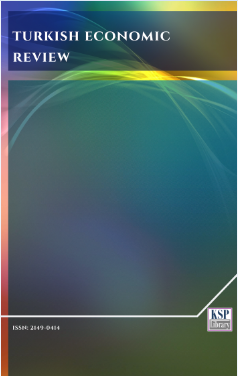Taxation and strategic reaction: a comparison of Cournot, Stackelberg and collusion
Abstract
Abstract. We study the effect of distortionary taxes on three types of market structure: Cournot duopoly, Stackelberg duopoly, anda monopoly under a collusive agreement between the two rival firms in the industry. We investigate different tax regimes such as a per unit tax, an ad valorem tax and a tax on total revenue. A unit tax rate reduces optimaloutput and profits for firms while market price rises with the imposition of the tax.Interestingly, the optimal tax rate is the same for all three market structures. The ad valorem tax is imposed on the value of the product and is mostly borne by the Stackelberg follower who ends up producing a greater output than what he would produce in the absence of a tax. The ad valorem tax increases firm output and reduces market price. The total revenue decreases output and increases industry price like the unit tax.
Keywords. Cournot duopoly, Stackelberg game, optimal tax rate, Lerner index.
JEL. D42, D43, H21, L12, L13.Keywords
References
Anderson, S.P., de Palma, A., & Kreider, B. (2001). The efficiency of indirect taxes under imperfect competition, Journal of Public Economics, 81(2), 231-251. doi. 10.1016/S0047-2727(00)00085-2
Azacis, H., & Collie, D.R. (2018). Taxation and the sustainability of collusion: ad valorem versus specific taxes, Journal of Economics, 125(2), 173-188. doi. 10.1007/s00712-017-0584-y
Besley, T. (1989). Commodity taxation with imperfect competition: a note on the effects of entry, Journal of Public Economics, 40(3), 359-367. doi. 10.1016/0047-2727(89)90048-0
Colombo, L., & Labrecciosa, P. (2013). How should commodities be taxed? A supergame-theoretic analysis, Journal of Public Economics, 97(C), 196-205. doi. 10.1016/j.jpubeco.2012.08.001
Cournot, A. (1838, translated 1960). Researches into the Mathematical Principles of the Theory of Wealth. Frank Cass & Co., London.
Delipalla, S., & Keen, M. (1992). The comparison between ad valorem and specific taxation under imperfect competition, Journal of Public Economics, 49(3), 351-367. doi. 10.1016/0047-2727(92)90073-O
Grazzini, L. (2006). A note on ad valorem and per unit taxation in an oligopoly model, Journal of Economics, 89(1), 59-74. doi. 10.1007/s00712-006-0201-y
Haworth, B. (1998). Oligopoly and the redistribution of market share under commodity taxation, International Advances in Economic Research, 4(4), 356-366. doi. 10.1007/BF02295689
Schröder, P.J.H. (2004). The comparison between ad valorem and unit taxes under monopolistic competition, Journal of Economics, 83(3), 281-292. doi. 10.1007/s00712-004-0096-y
Skeath, S., & Trandel, G. (1994). A Pareto comparison of ad valorem and unit taxes in noncompetitive environments, Journal of Public Economics, 53(1), 53-71. doi. 10.1016/0047-2727(94)90013-2
Stackelberg, H.F. (1934). Market Structure and Equilibrium (Marketform und Gleitchgewicht), Springer, Vienna.
Stern, N.H. (1987). The effects of taxation, price control and government contracts in oligopoly and monopolistic competition, Journal of Public Economics, 32(2), 133-158. doi. 10.1016/0047-2727(87)90009-0
Vetter, H. (2013). Consumption taxes in monopolistic competition: a comment, Journal of Economics, 110(3), 287-295. doi. 10.1007/s00712-012-0320-6
DOI: http://dx.doi.org/10.1453/ter.v7i2.2068
Refbacks
- There are currently no refbacks.
.......................................................................................................................................................................................................................................................................................................................................
Turkish Economic Review - Turk. Econ. Rev. - TER - www.kspjournals.org
ISSN: 2149-0414
Editor: [email protected] Secretarial: [email protected] Istanbul - Turkey.
Copyright © KSP Library




